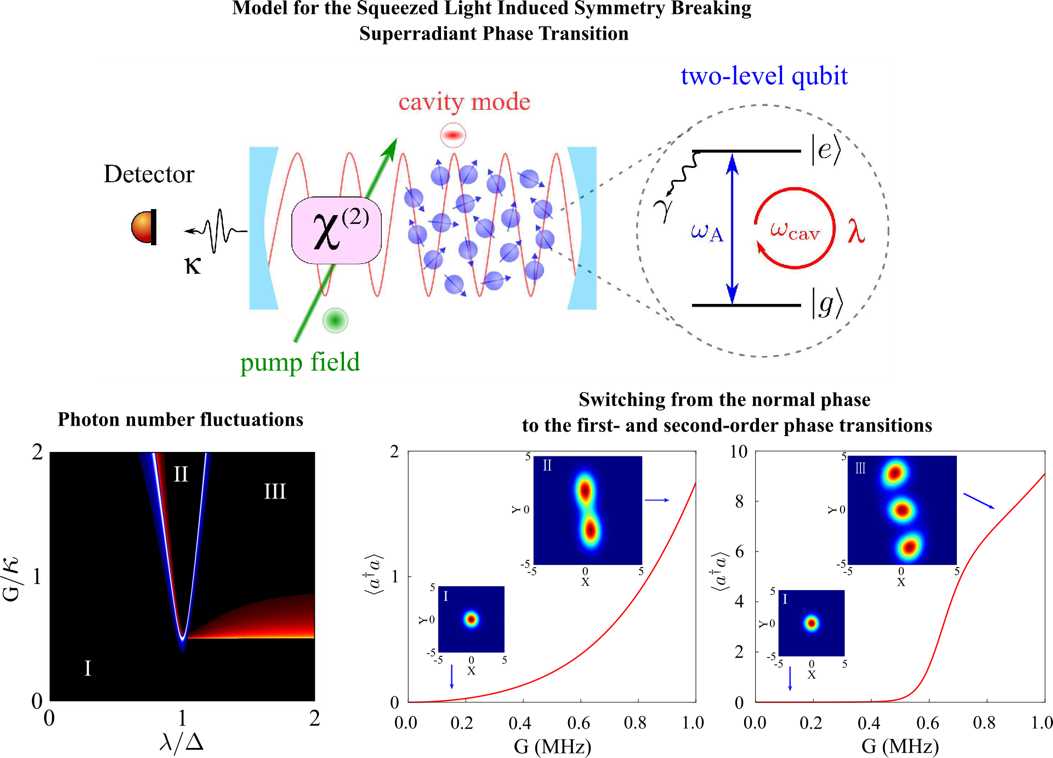On February 19, 2020, Physical Review Letters published online a paper “Squeezed Light Induced Symmetry Breaking Superradiant Phase Transition”, reporting a significant progress made by Professor Yaping Yang's research team of Tongji University on the realization of superradiant quantum phase transition in cavity quantum electrodynamics system without the ultrastrong coupling. This research is collaborated with Prof. Girish S. Agarwal of Texas A&M University.
Quantum phase transitions are phase transitions between two robust stable states caused by a non-thermal parameter that occur at zero temperature (T=0K). This phenomenon was first studied in seventies and the original work on Dicke phase transition included the counterrotating terms which become significant in the limit of ultrastrong coupling. Although such a coupling is now becoming possible using circuit QED and hence considerable work on phase transitions got revived due to advances in circuit QED, the model for such transitions has virtually remained unchanged since the early works.
Yang’s research team investigated the quantum phase transition in the collective systems of qubits in a high quality cavity, where the cavity field is squeezed via the optical parametric amplification process. Researchers show that the squeezed light induced symmetry breaking can result in quantum phase transition. The squeezed field driving will enhance the atom-cavity coupling, leading to the splitting of the normal phase and the implementation of the first-order and second-order phase transitions without the ultrastrong coupling. By choosing specific atom-cavity coupling strengths, both the first- and second-order phase transitions can be controlled by the squeezed light intensity, leading to an optical switching from the normal phase to the superradiant phase by just increasing the squeezed light intensity. Since the first-order phase transition is abrupt at the critical point, the proposal presented here will lead to an application of an ultrafast optical switching.

Fig. 1: Squeezed light induced phase transitions. The first/second-order phase transition is denoted by the transition from regime I to regime III/II.
About the paper:
This research is supported by the National Key Basic Research Special Foundation of China, the Shanghai Science & Technology Committee, and the National Nature Science Foundation of China. Professor Yaping Yang and Professor G.S. Agarwal are the corresponding authors. Research Professor Chengjie Zhu and PhD candidate Leilei Ping of Yang’s team are the first and second authors of this paper, respectively.
Full-text paper “Squeezed Light Induced Symmetry Breaking Superradiant Phase Transition” is available at https://journals.aps.org/prl/abstract/10.1103/PhysRevLett.124.073602